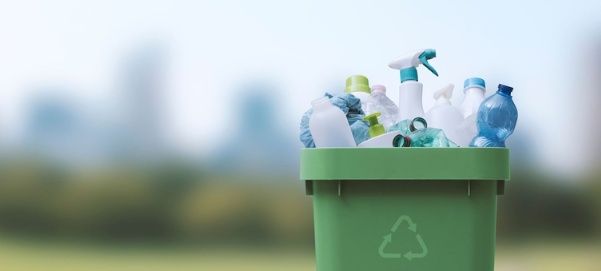Australia Plastic Recycling Rate Stagnates at 13%
According to the latest Australian Plastics Flow and Fate (APFF) report, Australia consumed 4 million tonnes of plastic in the 2023-2024 financial year, but only 13% was recycled.
These figures highlight that despite the growth in local post-processing capacity, the gap between plastic usage and recycling continues to widen.

Australia’s plastic recycling rate has remained unchanged compared to 2023 and has stagnated over the past few years. The country recycled 13.9% in 2022, 12.6% in 2021, and 12.3% in 2020, after a steady increase from 9% during 2017-2019.
The report, published by the Department of Climate Change, Energy, the Environment and Water, found that 3.2 million tonnes of plastic were discarded last year. Of these, only 446,000 tonnes were recovered: 423,000 tonnes through recycling and 23,000 tonnes through energy recovery. Nearly 87% of the plastic ultimately ended up in landfill. Australia reprocessed 300,000 tonnes (67% of the total waste) and exported 145,000 tonnes (33%).
Recycling performance varies by polymer type. PET has the highest recycling rate at 37%, followed by HDPE at 20%, nylon at 18%, and LDPE at 16%. PVC and polystyrene have the lowest recycling rates at 2% and 6%, respectively. ABS has a recycling rate of 12%, bioplastics have a rate of 11%, and polypropylene has a rate of 9%.
Packaging continues to dominate recovery efforts. Consumer packaging accounted for 237,000 tons, with a recycling rate of 22%, while 65,000 tons of business-to-business packaging had a recycling rate of 39%. Non-packaging plastics (including textiles, construction materials, and medical devices) had a recovery rate of only 7%.
In 2023-24, the post-processing capacity almost doubled to 600,000 tons, but only half of it was utilized. The report warns that this significant spare post-processing capacity should be interpreted "with caution." These figures do not reflect challenges such as the lack of suitable raw materials, personnel shortages, and weak demand for recycled materials.
By the 2028-29 period, Australia is expected to add another 624,000 tons of capacity, bringing the total national capacity to about 1.2 million tons. However, by that time, plastic waste is expected to reach 3.6 million tons, with two-thirds of the discarded plastic still having no recycling pathway within Australia.
Local Recycling
The report found that 62% of the plastic consumed in Australia comes from imported finished and semi-finished products. Additionally, 31% is produced locally using virgin resin, while only 7% is manufactured locally using recycled materials.
By 2024, Australia will have delivered 233,000 tons of recycled plastics to local manufacturing. Data shows that Australia is increasingly using recycled materials in domestically manufactured products. Last year, the proportion of recycled content in domestic products reached 17%, up from 15% in 2023 and 9% in 2020.
Locally produced PET products contain approximately 39% domestically recycled material. The local recycling rate for PP and LDPE is 19%, HDPE is 17%, bioplastics is 13%, PS is 10%, ABS is 8%, nylon is 5%, and PVC is 2%.
The report indicates that it is impossible to determine the recycled content of imported goods.
In 2018, Australia introduced national packaging targets in an industry-led initiative that imposes no penalties for failure. It requires 70% of plastic packaging to be recycled or composted by 2025. It is now clear that Australia will not meet the target. Despite calls from groups to introduce a plastics tax and Extended Producer Responsibility (EPR) schemes in response, Australia earlier this year suspended reforms to the EPR fee model.
The government has recently increased its investment in plastic recycling, particularly in film recycling facilities. This fund was established after the failure of the Australian soft plastics recycling program in 2022.
【Copyright and Disclaimer】The above information is collected and organized by PlastMatch. The copyright belongs to the original author. This article is reprinted for the purpose of providing more information, and it does not imply that PlastMatch endorses the views expressed in the article or guarantees its accuracy. If there are any errors in the source attribution or if your legitimate rights have been infringed, please contact us, and we will promptly correct or remove the content. If other media, websites, or individuals use the aforementioned content, they must clearly indicate the original source and origin of the work and assume legal responsibility on their own.
Most Popular
-

At Least 44 Dead in Century-Old Fire! Questioning Hong Kong's Hong Fu Garden: Why Has the Path to Fire Resistance Taken 15 Years Without Progress?
-

Satellite chemical's profits surge! can the 26.6 billion yuan high-end new materials project meet expectations? a review of progress on four major projects
-

Key Players: The 10 Most Critical Publicly Listed Companies in Solid-State Battery Raw Materials
-

Estun Turns Profitable in 2025 Half-Year Report, Industrial Robot Shipments Rank First Among Domestic Brands
-

Avatr Files for IPO on HKEX, Plans to Complete Listing in Q2 2026






